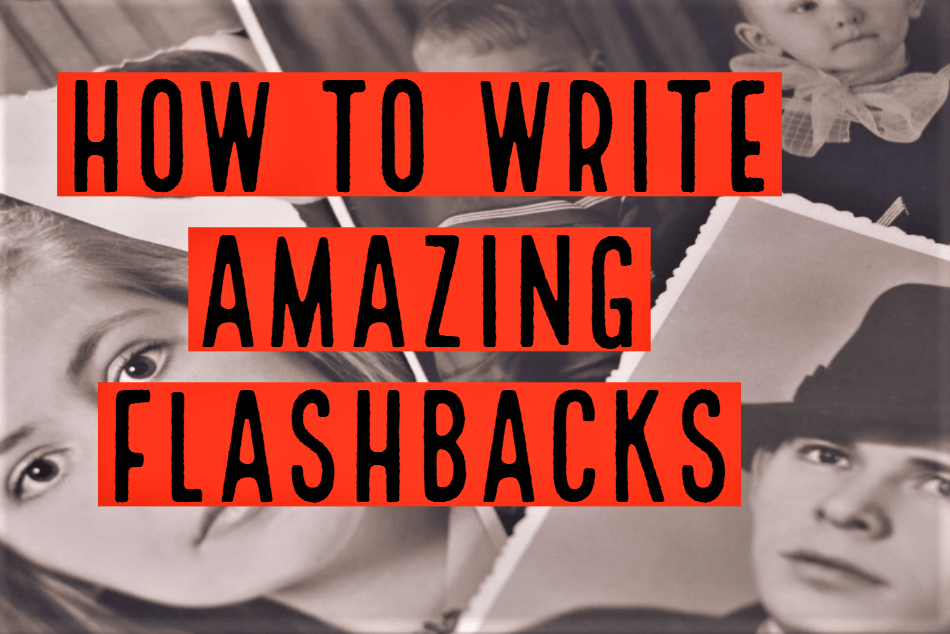Fiction writing generally flows forward, but that flow may be diverted or interrupted by a flashback: a scene from the past.
Successful commercial authors craft fast-paced, experiential novels in which readers’ attention never flags. Even then, sometimes an element of a character’s back story is essential to a book’s main plot. A flashback may be the best way to include this info.
Even while jumping back in time, a commercial novel must always maintain momentum.
Flashbacks bolster a story while providing needed knowledge and illuminating characterization from the past. In a flashback, readers accompany characters within their memories, reliving key experiences alongside them in real time.
A great flashback does more than explain, it advances the plot.
These vivid scenes can be a joy to write. It’s easy to understand why ever-curious writers love flashbacks, and they’ve been a longtime feature of fiction. Flashback fans include Marcel Proust, Emily Brontë and Steig Larsson.
Wait 50 pages
Novelists are advised to avoid flashbacks in their book’s first 50 pages. Before mixing up the timeline, readers should be fully invested in the major storyline, with established characters and setting.
If readers are uncommitted to the main plot, a flashback may be unwanted—and therefore less engaging. But once readers are securely immersed in the narrative, they may welcome interesting information from a digressionary passage.
(The above 50-page rule definitely does not apply if an author’s novel is comprised of dual narratives that alternate. A complete second story is not a flashback. The jumps in time are part of the book’s forward narrative.
Also, a prologue differs from a flashback, but that’s a subject for another day.)
Handle with care
Including an effective flashback isn’t easy, and there must be a good reason for interrupting the narrative. Before putting a flashback into a story, authors should ask themselves if there is another way to include this information.
A flashback may not be needed if its work can be accomplished instead in just a few lines. While still putting meaning in context, these minis are not flashback because they are exposition—showing, not telling.
“…like the cat I used to have when I was ten.”
“My sister, who always won every argument…”
Make clear that you are moving back in time
Alright, so we understand a writer’s reason for including a flashback. But what about within the story, within the minds of its characters? A flashback should be inserted at a specific point with good reason.
A flashback must line up with the overall narrative’s POV. Having it stand apart from the rest of the story is a common and deadly mistake.
There are a few methods to segue into a flashback, but the one used most is having a character start to recall something. What triggered this memory? Did the taste of paprika bring her back to that rainy day in Budapest?
A memory is jarred. This is followed by a scene break, and the flashback commences.
Readers must clearly realize when a flashback begins, especially if it is within a chapter. Separating out a flashback into its own chapter may help signal the reader that the narrative has shifted.
At the end of the flashback, another transition is required: back to the main story. Again, skillfully ease your reader from one place to another.
The Pitfalls
The switch to an alternate time and place may be jarring. Poorly done, a flashback can stop a story dead.
A recalled passage may have less impact than one told in real time. If the story starts skimming, its episodes free-floating and without context, it feels loose, and readers may lose confidence in it. This narrative shapelessness might work just fine in experimental works, but if the goal is fast-paced commercial fiction, writers must provide readers with a powerfully controlled narrative.
Yes, but—
Novels don’t necessarily need flashbacks, and there are good reasons they should be avoided. Without a doubt, their placement within a story must be done with discretion and care.
That said, career authors push their own boundaries. And just because something is hard doesn’t mean don’t do it. No one said it was easy. Still, it should be fun.
When do you think a flashback is necessary? Let us know your thoughts on Facebook.





